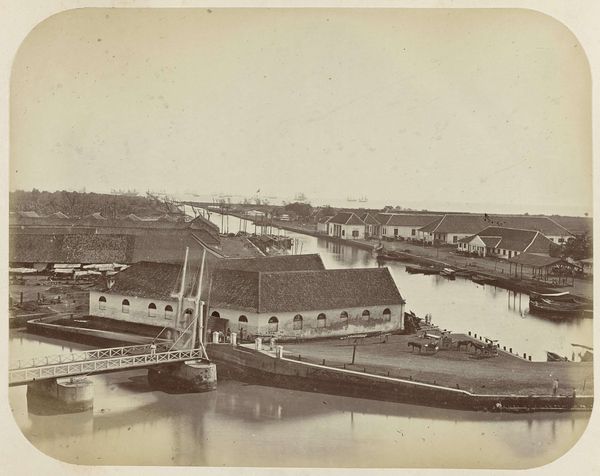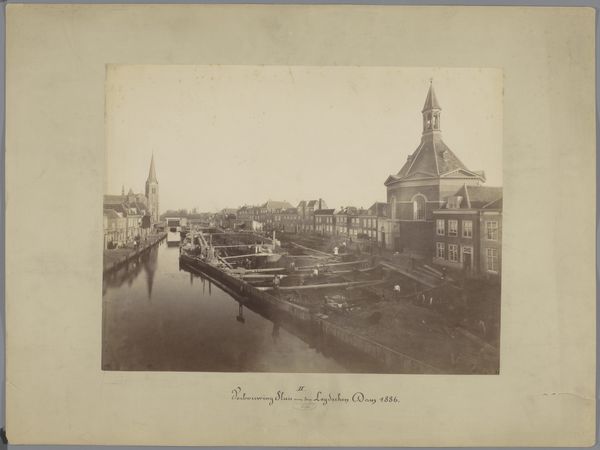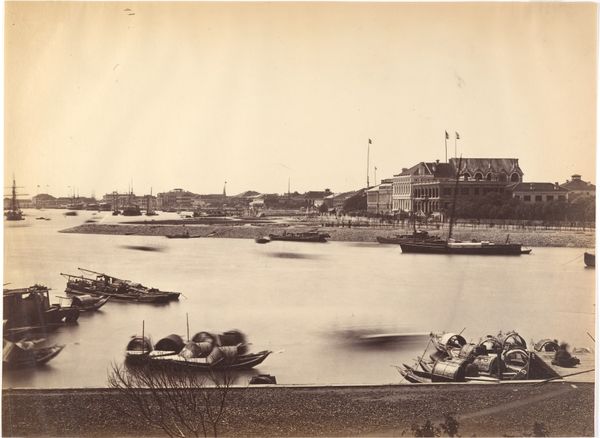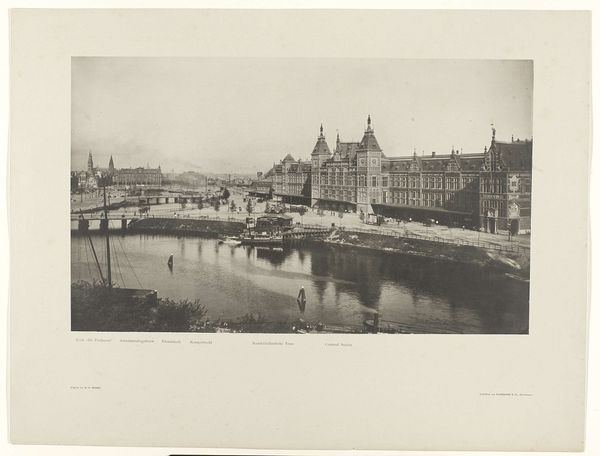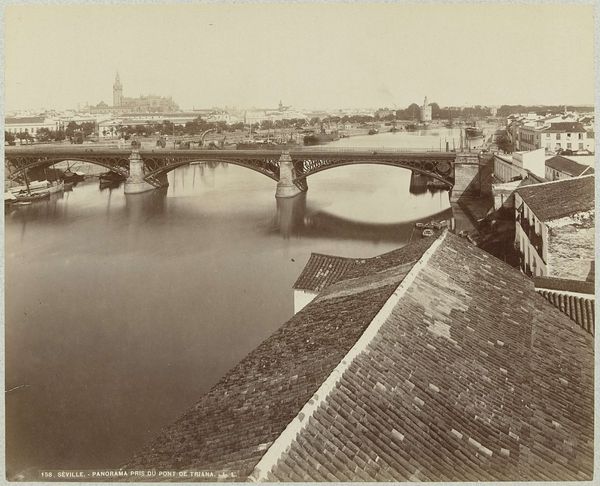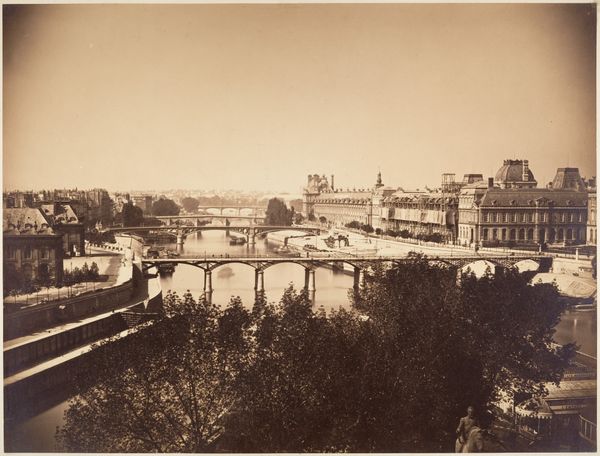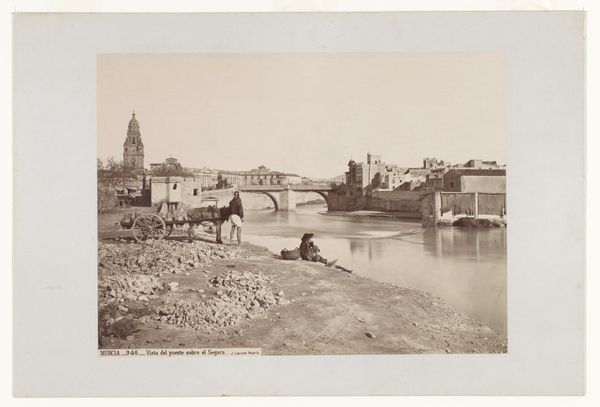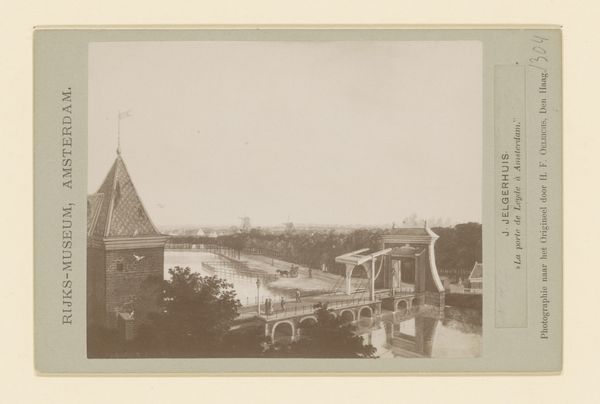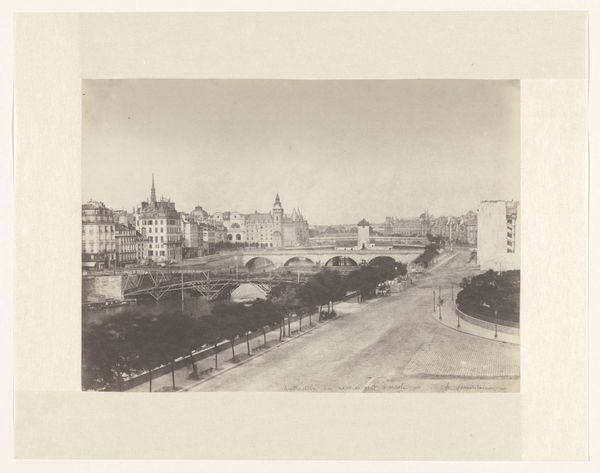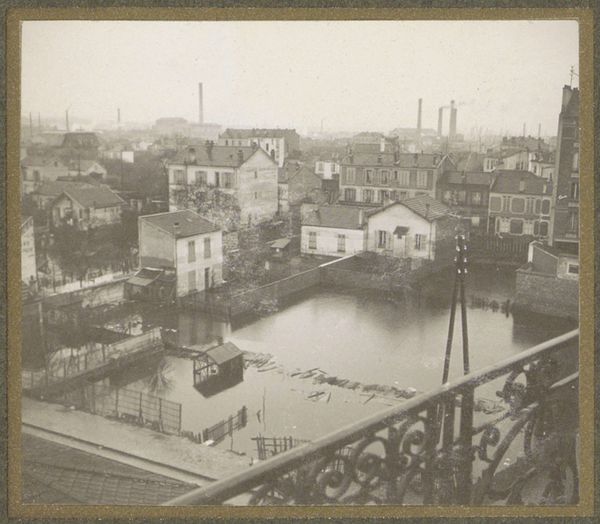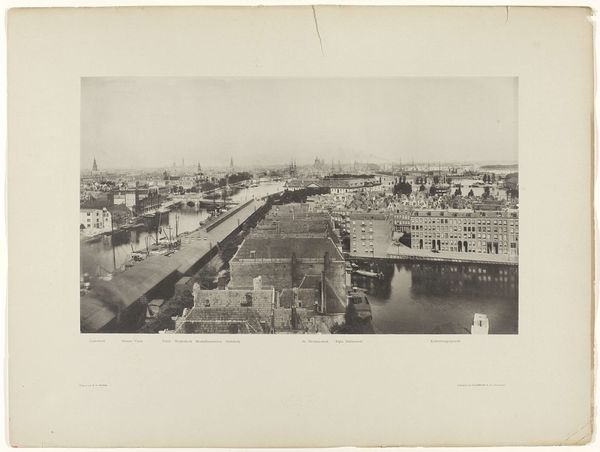
Gezicht op de Altstadt van Dresden met de brug over de Elbe Possibly 1857 - 1858
0:00
0:00
daguerreotype, photography
#
landscape
#
daguerreotype
#
photography
#
historical photography
#
19th century
#
cityscape
Dimensions: height 172 mm, width 224 mm
Copyright: Rijks Museum: Open Domain
Curator: What a dreamy sort of vista... slightly sepia, with a curious geometry in the framing itself. It makes me think of old storybooks and half-forgotten adventures. Editor: Indeed, the work is titled "Gezicht op de Altstadt van Dresden met de brug over de Elbe," which translates to "View of the Old Town of Dresden with the bridge over the Elbe". It's attributed to Hermann Krone, possibly taken between 1857 and 1858. Curator: Ah, Dresden. That explains the almost gothic, monumental architecture. The detail, for such an old photograph, is incredible! You can almost feel the cool air coming off the river. It feels meticulously constructed, and very controlled. It speaks of order and an age where capturing a city was a special undertaking. Editor: Yes, it's a daguerreotype, which was a very early form of photography. It required long exposure times and painstaking chemical processes. Krone operated a studio in Dresden, and his work offers invaluable glimpses into the city’s mid-19th century appearance, of the social and visual landscape that formed. The bridge, of course, has been rebuilt since then, lending a romantic tone. Curator: The lack of people does lend itself to romance in a way. I love thinking about them and where they have gone over the years. With the limited technology and lack of people it gives a real feeling for architecture as art! Like each brick laid, an individuals dream for what will become of it all, is embedded. Editor: Precisely. The choice of vantage point, too, isn't accidental. It's an exercise in civic pride as well as urban documentation. The cityscape has been designed and refined, especially given how architecture played into empire during that era, but a landscape offers space for everyday life as well! Curator: Absolutely! It shows how far we've come in photography, but also how much has changed – and, perhaps more subtly, what we have gained, but lost in terms of that meticulous observation, almost an architectural time capsule of the late 19th century! It captures more than a visual record but captures the feel of an emerging world in those cobblestones! Editor: The daguerreotype stands as a reminder of our shared human fascination with our past and how art plays a critical role in that dialogue between generations, I will have to revisit how much architecture and photography has done for a culture.
Comments
No comments
Be the first to comment and join the conversation on the ultimate creative platform.
